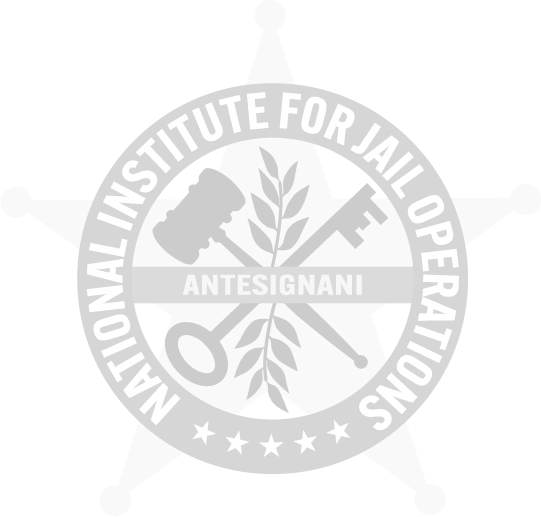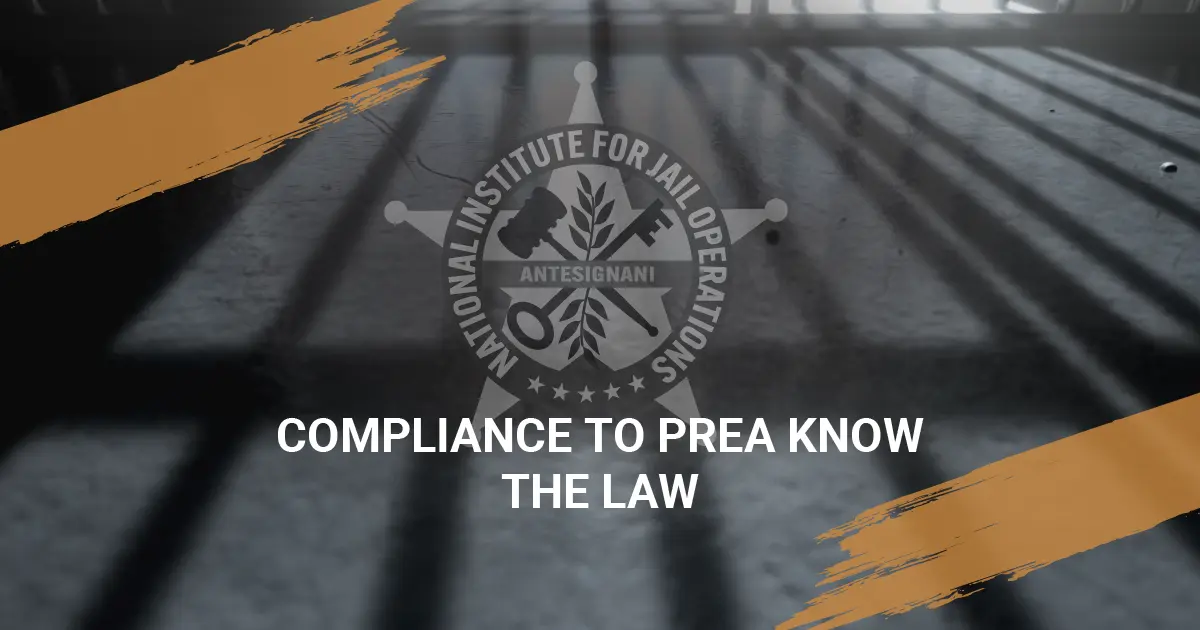By Expert: Tate McCotter, NCCE
Since 2012, one of the most requested subjects for jail training across the United States has been PREA. In 2012, the National Institute for Jail Operations trained in 35 states on a variety of legal-based subjects. Sheriffs and jail administrators have repeatedly asked in simple terms “What is PREA and how does it affect my jail.” Many are concerned about becoming “PREA compliant”, wondering what penalties and liability may occur with non-compliance to the DOJ PREA standards. With the world of liability, litigation and political pressure, it is understandable and quite necessary that sheriffs and jail administrators get accurate information to protect them against potential lawsuits so that they can confidently operate constitutionally safe and secure jails.
There is no shortage of information and training out there on PREA. Sheriffs can find numerous seminars, webcasts, online training and conferences offered by a variety of national organizations involved with the corrections and detention profession. Often, the major focus has been “becoming PREA compliant” – using the DOJ PREA standards as the primary source of content for training and policy and procedure development. Training and general discussions on the subject most often refer to the DOJ PREA standards rather than the PREA Act itself. Many jail officials and sheriffs are surprised to know they are not one and the same. So much focus has been given to the DOJ PREA standards that few have become familiar with the Act itself. In training on PREA, I have often asked “how many of you have read PREA?” A number of attendees respond affirmatively they have read all 268 pages. Then I ask how many have read the Act passed by Congress. Rarely do I see hands go up. They have read the DOJ PREA standards but are unfamiliar with what the Act requires.
The truth is, very few resources and little national training have been made available for sheriffs and jail administrators which address the Act itself. Studying the Act will help sheriffs and jail officials understand and know what is required to be compliant to the law and the DOJ’s role in developing standards. The DOJ PREA standards are VOLUNTARY for jails,contrary to widespread opinion. While the DOJ wrote the standards with the intent to be applicable to all correctional facilities, including prisons, jails, community holding facilities and juvenile facilities, compliance to the DOJ standards is NOT required except for federal facilities.[1] Compliance with the Act passed by Congress; however, is required for all facilities. That is why the distinction between the two is so significant. It is the choice of the sheriff who is the statutory keeper of the jail to decide whether or not to adopt the DOJ standards or implement their own policies and procedures that address what the law requires.
The Prison Rape Elimination Act, Public Law 108-79, was passed by Congress and signed by Pres. Bush in 2003.[2] The PREA Act defines its purpose as to prevent sexual assaults and sexual harassment of prisoners. While the Act places emphasis on the importance of the duty to protect prisoners from sexual assault, sexual abuse and rape, there is no new cause of action – this is a duty already imposed on sheriffs operating jails under the 8th and 14thAmendments of the U.S. Constitution.
Even prior to their release, the details of DOJ PREA standards were highly debated amongst sheriffs who felt the majority of issues addressed in the standards were already being met within their own institutional administrations effectively. It is no secret that administrative discretion involving the office of sheriff and jail administration has been under attack. Discussion of the use of administrative segregation, strip searches, use of postcards are commonplace in the media and academia. Many outside organizations have tried to place inmate rights over the safety, security and legitimate penological interests of the jail. This was a key issue in the recent Supreme Court strip search ruling, Florence v Board of Chosen Freeholders of Burlington County[5], which ruled in favor of administrative discretion, allowing administrations “significant deference” in setting policy and procedure.
Many jails already operate with administrative means in place addressing PREA and the duty to protect, such as adhering to a strict staff code of conduct and enforcing inmate rules and regulations to create a zero-tolerance culture of sexual assault, rape and sexual abuse within the jail. These are proactive efforts to set the tone and eliminate officer-on-inmate and inmate-on-inmate potentialities. Many facilities have implemented formal and informal means of which prisoners and inmates may utilize to report any such allegations of abuses. Additionally, facilities have enhanced their classification systems as a means to identify and protect perpetrators as well as potential victims. Jail officials have implemented proactive measures within medical and mental health screening that exceed what the law requires and in many cases what the DOJ PREA standards require. Jail administrations have reviewed their processes and made changes to allow to the ease of reporting and updated investigation processes for timely review of incidents involving inmates and staff. Checks and balances exist to invoke good communication and honesty without retaliation.
Compliance to the DOJ PREA standards will involve monetary commitment. Some sheriffs have rightfully voiced concerns that implementing the DOJ PREA standards would result in undue financial hardship on sheriffs to become compliant to the standards. The Act required the Attorney General to ensure that such costs would not “impose substantial additional costs compared to the costs presently expended by Federal, State and local [jail] authorities.”[6]
[1]42 USC § 15607(b).
[2]42 USC § 15601 et seq.
[3]42 USC § 15602(3).
[4]28 CFR § 115.
[5]Florence v Board of Chosen Freeholders of Burlington County, 566 U.S. (2012).
[6]42 USC § 15607(a)(3) (emphasis added).



